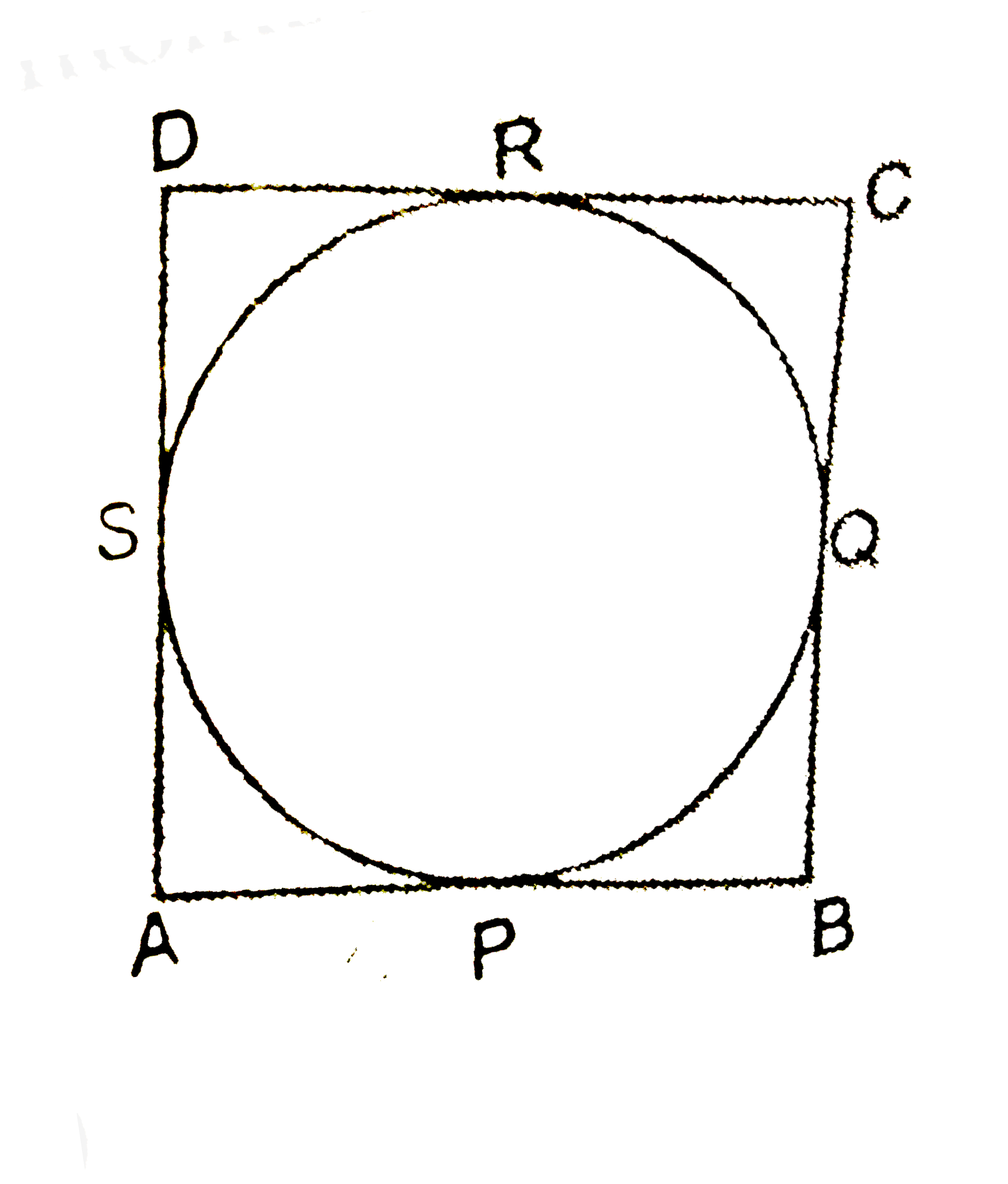If the sides of a parallelogram touch a circle prove that the parallelogram is a rhombus.
To prove that if the sides of a parallelogram touch a circle, then the parallelogram is a rhombus, we can follow these steps:
Step 1: Understand the configuration
Let ABCD be a parallelogram with a circle inscribed in it, meaning that the sides AB, BC, CD, and DA are tangent to the circle at points P, Q, R, and S respectively.
Step 2: Use the property of tangents
From point A, the segments AP and AS are tangents to the circle. By the property of tangents from a point to a circle, we know that the lengths of tangents drawn from a point outside the circle to the points of tangency are equal. Therefore, we can write:
- AP = AS (1)
Step 3: Apply the same property for other points
Similarly, we can apply the same property to the other vertices of the parallelogram:
- From point B: BP = BQ (2)
- From point C: CR = CQ (3)
- From point D: DR = DS (4)
Step 4: Add the equations
Now, we can add all four equations together:
AP + BP + CR + DR = AS + BQ + CQ + DS
Step 5: Substitute the sides of the parallelogram
Since AB = AP + BP, CD = CR + DR, AD = AS + DS, and BC = BQ + CQ, we can rewrite the equation as:
AB + CD = AS + BQ + CQ + DS
Step 6: Rearranging the equation
We can rearrange the equation to show that:
AB + CD = AD + BC
Step 7: Use properties of parallelograms
In a parallelogram, opposite sides are equal. Therefore, we have:
AB = CD and AD = BC.
Step 8: Conclude the proof
From the equations derived, we can conclude:
AB = BC = CD = DA.
This means all sides of the parallelogram are equal, which is the definition of a rhombus.
Final Conclusion
Thus, we have proved that if the sides of a parallelogram touch a circle, then the parallelogram is a rhombus.
---
Let ABCD be a parallelogram with a circle inscribed in it, meaning that the sides AB, BC, CD, and DA are tangent to the circle at points P, Q, R, and S respectively.
From point A, the segments AP and AS are tangents to the circle. By the property of tangents from a point to a circle, we know that the lengths of tangents drawn from a point outside the circle to the points of tangency are equal. Therefore, we can write:
- AP = AS (1)
Similarly, we can apply the same property to the other vertices of the parallelogram:
- From point B: BP = BQ (2)
- From point C: CR = CQ (3)
- From point D: DR = DS (4)
Now, we can add all four equations together:
AP + BP + CR + DR = AS + BQ + CQ + DS
Since AB = AP + BP, CD = CR + DR, AD = AS + DS, and BC = BQ + CQ, we can rewrite the equation as:
AB + CD = AS + BQ + CQ + DS
We can rearrange the equation to show that:
AB + CD = AD + BC
In a parallelogram, opposite sides are equal. Therefore, we have:
AB = CD and AD = BC.
From the equations derived, we can conclude:
AB = BC = CD = DA.
This means all sides of the parallelogram are equal, which is the definition of a rhombus.
Thus, we have proved that if the sides of a parallelogram touch a circle, then the parallelogram is a rhombus.
Topper's Solved these Questions
- BOOK - ICSECHAPTER - TANGENTS AND INTERSECTING CHORDSEXERCISE - EXERCISE 18 (B)18videos
TANGENTS AND INTERSECTING CHORDS
- BOOK - ICSECHAPTER - TANGENTS AND INTERSECTING CHORDSEXERCISE - EXERCISE 18 (C)42videos
TANGENTS AND INTERSECTING CHORDS
- BOOK - ICSECHAPTER - TANGENTS AND INTERSECTING CHORDSEXERCISE - EXERCISE 18 (C)42videos
TANGENTS AND INTERSECTING CHORDS
- BOOK - ICSECHAPTER - SPECIMEN QUESTION PAPER (MATHEMATICS)EXERCISE - Section C12videos
SPECIMEN QUESTION PAPER (MATHEMATICS)
- BOOK - ICSECHAPTER - TRIGONOMETRICAL IDENTITIESEXERCISE - QUESTIONS22videos
TRIGONOMETRICAL IDENTITIES
Similar Questions
If all the side of a parallelogram touch a circle, show that the parallelogram is a rhombus. OR Prove that a parallelogram circumscribing a circle is a rhombus.
View SolutionIf a parallelogram circumscribes a circle then prove that it must be a rhombus.
 View Solution
View SolutionIf the diagonals of a parallelogram are of equal lengths, the parallelogram is a rectangle. Prove it.
View SolutionState True or False
Every parallelogram is a rhombusView SolutionIf the sides of a quadrilateral touch a circle, prove that the sum of a pair of opposite sides is equal to the sum of the other pair.
View SolutionThe figure formed by joining the mid-point of the adjacent sides of a parallelogram is a (a)rectangle (b) parallelogram (c) rhombus (d) square
View SolutionIf the sides of a quadrilateral ABCD touch a circle prove that
AB+CD=BC+AD.View SolutionProve that of all parallelograms of which the sides are given, the parallelogram which is rectangle has the greatest area.
View SolutionProve that any cyclic parallelogram is a rectangle.
View SolutionProve that any cyclic parallelogram is a rectangle.
View Solution
